CONTEXT AND SIGNIFICANCE
My previous group project was about a bed-like machine interacting with the person lying on it through dialogue, vibration, and transforming into the desired function (storage, washing basin, kitchen, and transportation). The Bedman project seems to be lack of physical interactions: one could only make an impact by verbal communication, missing out the fun of human influencing changes made by himself physically.
A project: “Connected Tools – Devices that mediate smartphone consumption” inspired me most. When one wants to set a goal through the device, he needs to pull the string–the longer the string is, the bigger the goal is. Moreover, the result is also indicated through the string– you can directly compare the length of the string to see whether you have met your goal, and how much is the gap. This project gives me 2 inspirations: 1) physical impact should be involved. 2) visualization of the result.
What is unique about our project is that it involves both physical impact(press) and the vocalization of the result(music box giving out music). The targeted audiences are those who love cats (There are 2 kittens and 1 kitten’s paw in the project), want to be cured and seek for a good mood. Why is special is that the audiences may not have listened to the beautiful rhythm from a music box for a long time, nor have they experienced pressing a kitten’s paw to drive the music box–to create music themselves simply by pressing and even to control the speed of the music by the pressure they give.
CONCEPTION AND DESIGN
When coming across a kitten’s paw, people may think of rubbing it or pressing it. Therefore, we set the activating pressure threshold to very low, helping people to activate the music box by a light press.
When looking at a music box, users definitely want to hear it. Therefore, we helped the users to fulfill their wish. We narrowed the options to activate the music box to only 2, making it seemed obvious: Do something either to the kitten lying in the middle of the wooden box, or to the kitten’s paw at the right top corner. After a quick test, the users would find out which one to pet to create music.
This is our circuit diagram:
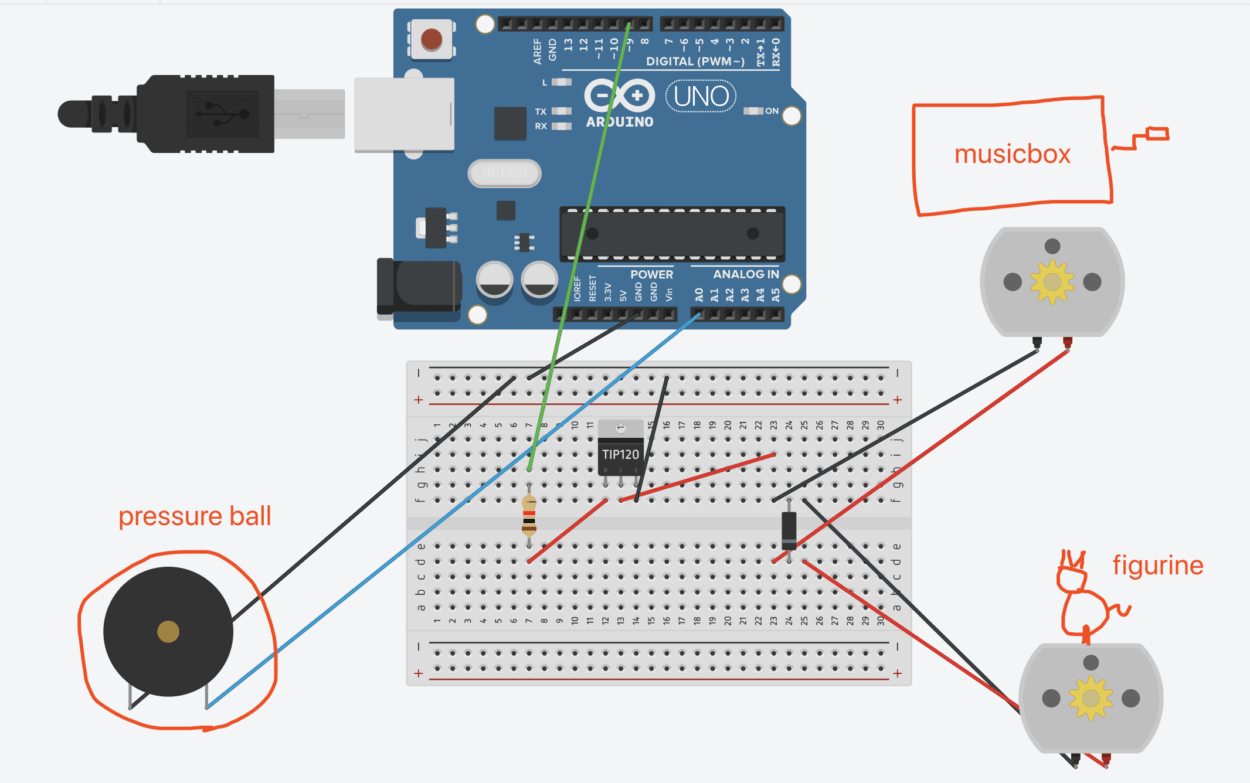
When choosing what to press, we first thought of stress relieve balls that give a certain outcome that makes people feel a relief of pressure. However, due to our concern about breaking the pressure sensor when inserting it into the ball, we chose to buy some flat rubber toys which are also good for rubbing and pressing. As for electrically driving the music box, we chose the toy motor for its speed of spinning. The stepper motors/motors might be a lot quieter than toy motors, but, for the former, the speed is too slow, for the latter, the strength is too light to drive the music box handle.
FABRICATION AND PRODUCTION
The most significant step is to drive the music box handle with a toy motor. We had to design a gear, 3d print it and fit it into the frame that actually would make the music box handle spin.
- We had a “battle” with the 3D printer: It broke down at the very beginning. Tristan tried to help us fix the both broke down 3D printers, but we ended up waiting for the next day after repairment.
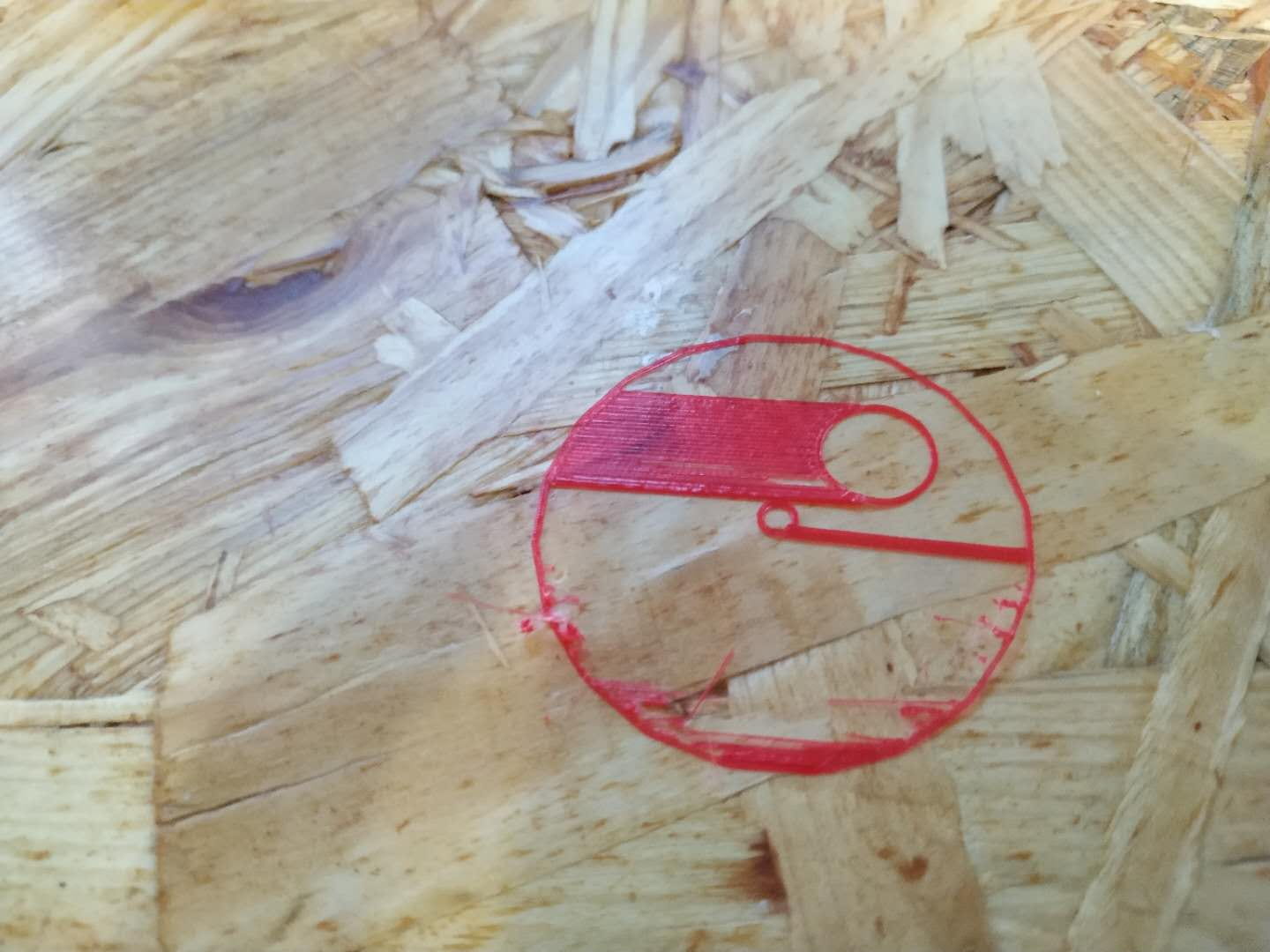
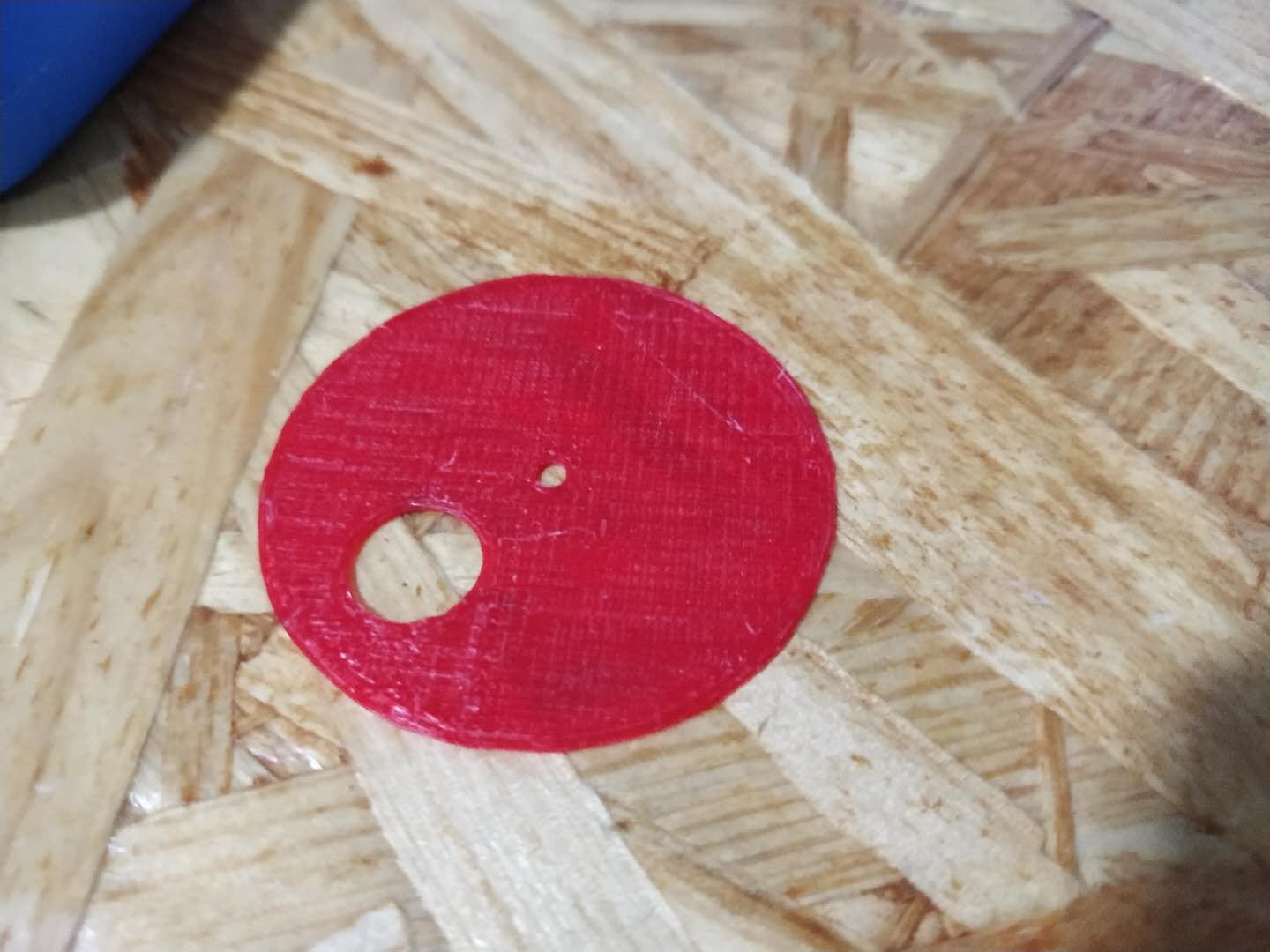
2. We adjusted the thickness and the holes to fit them better. Printing test ones matters a lot. (Sorry the sketches are lost)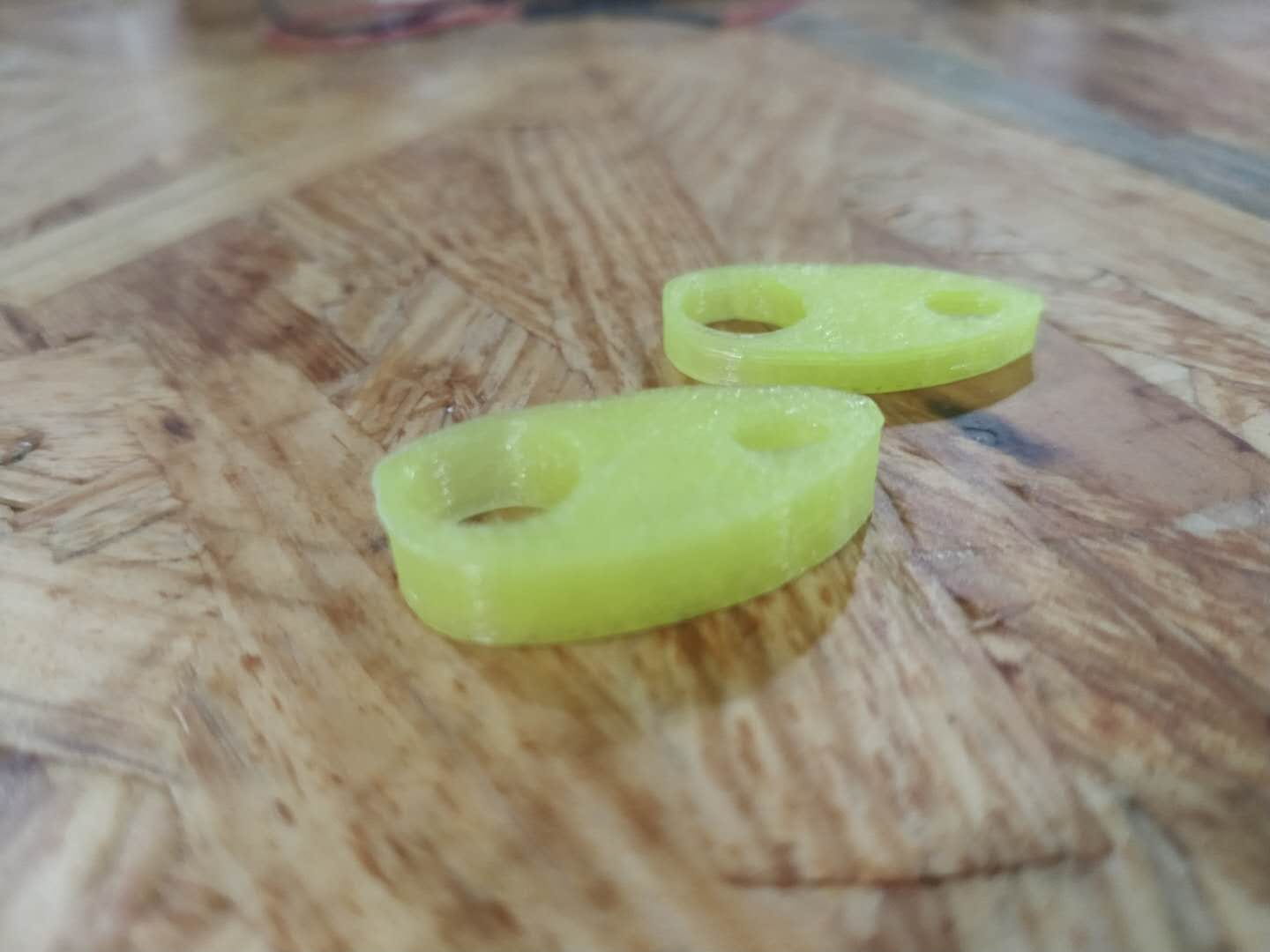
3. We finally fit the gear into both. 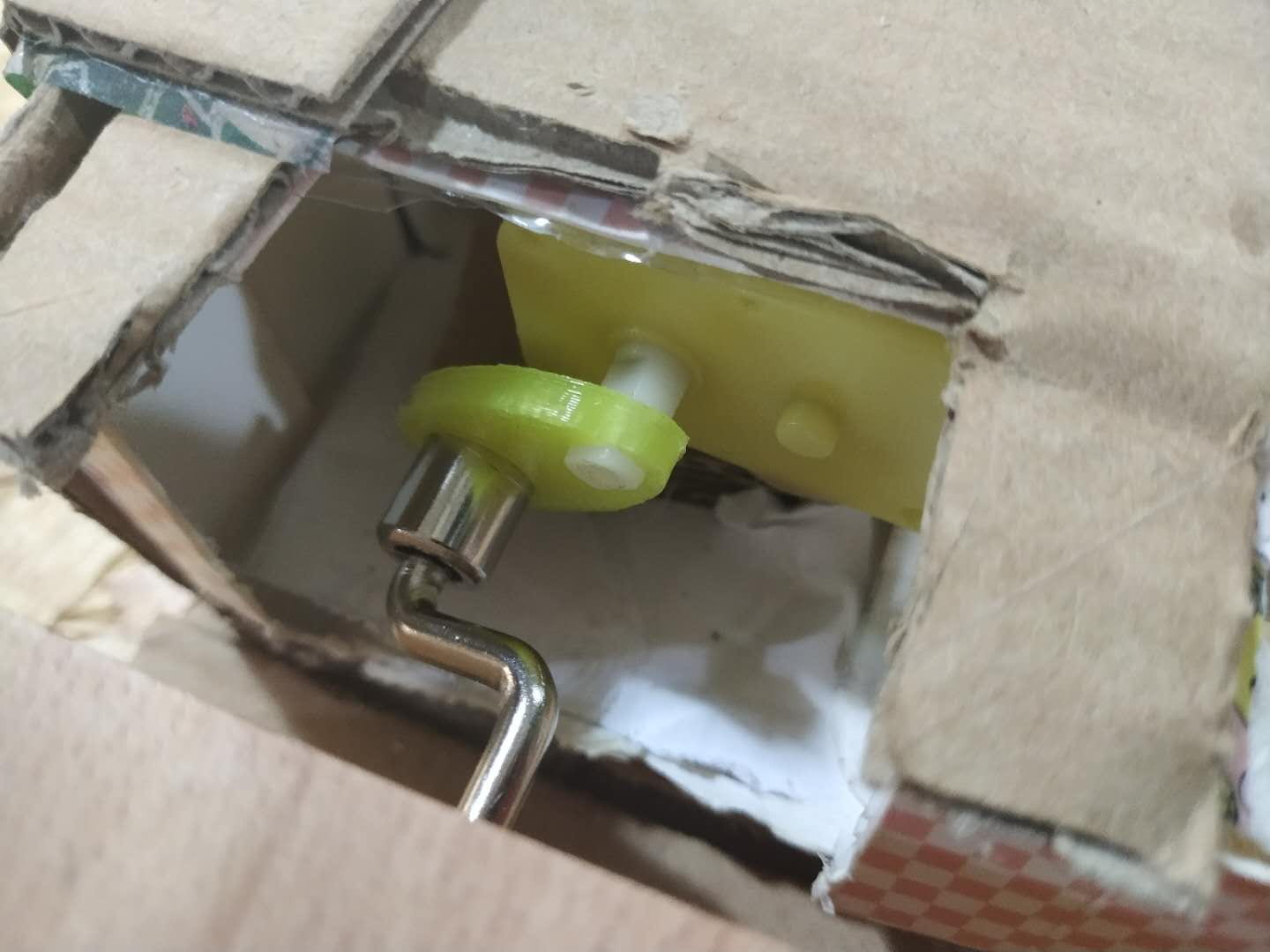
4. We ended up making a box to support the toy motor, inserting many cardboard pieces to meet the height difference between the handle and the motor and to make the structure heavy and solid enough.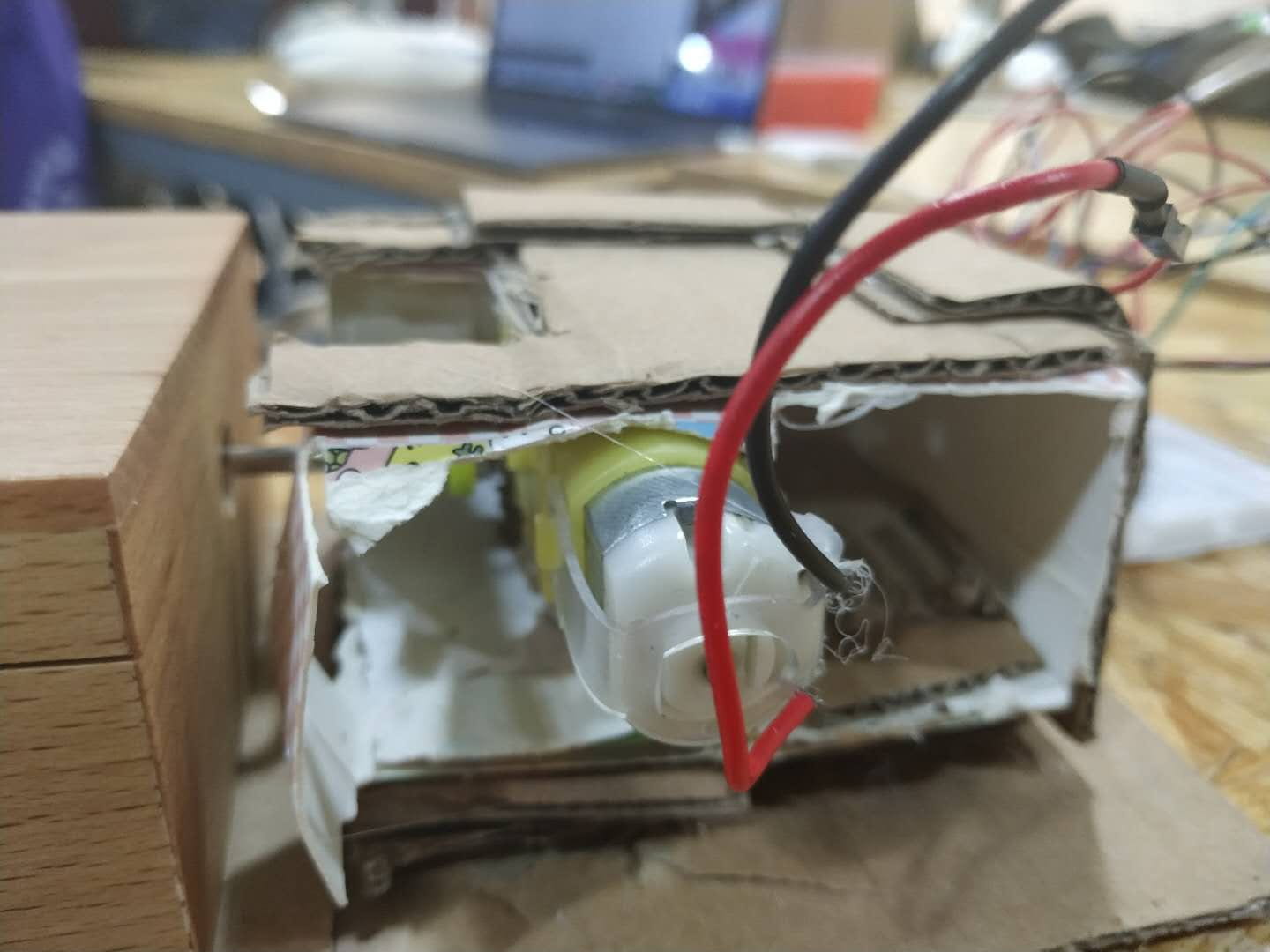
5. This is when we succeed!
The suggestions we collected during the user testing is that: 1)The toy motor is too loud. 2)Users have to press very hard to hear the music. The kitten is cute for rubbing, not pressing like killing it. 3)The blue kitten that acts as a figurine spins too fast. 4)The cables and Arduino could be hidden and make the project more beautiful.
The adjustments accordingly: 1)We laser cut a box to keep the noise of the motor from affecting the music.–quite effective 2)We adjusted the activating pressure threshold to very low, helping people to activate the music box by a light press.–quite effective, but the paw is a little bit broken. 3)We adjusted the mapping to slow down the figurine as well as the music box.–effective 4)The cables and Arduino are hidden in the box mentioned in 1).–effective. A paw and a cat is stuck to the top, making it clear for users to interact with it.
This is “before” and “after”:
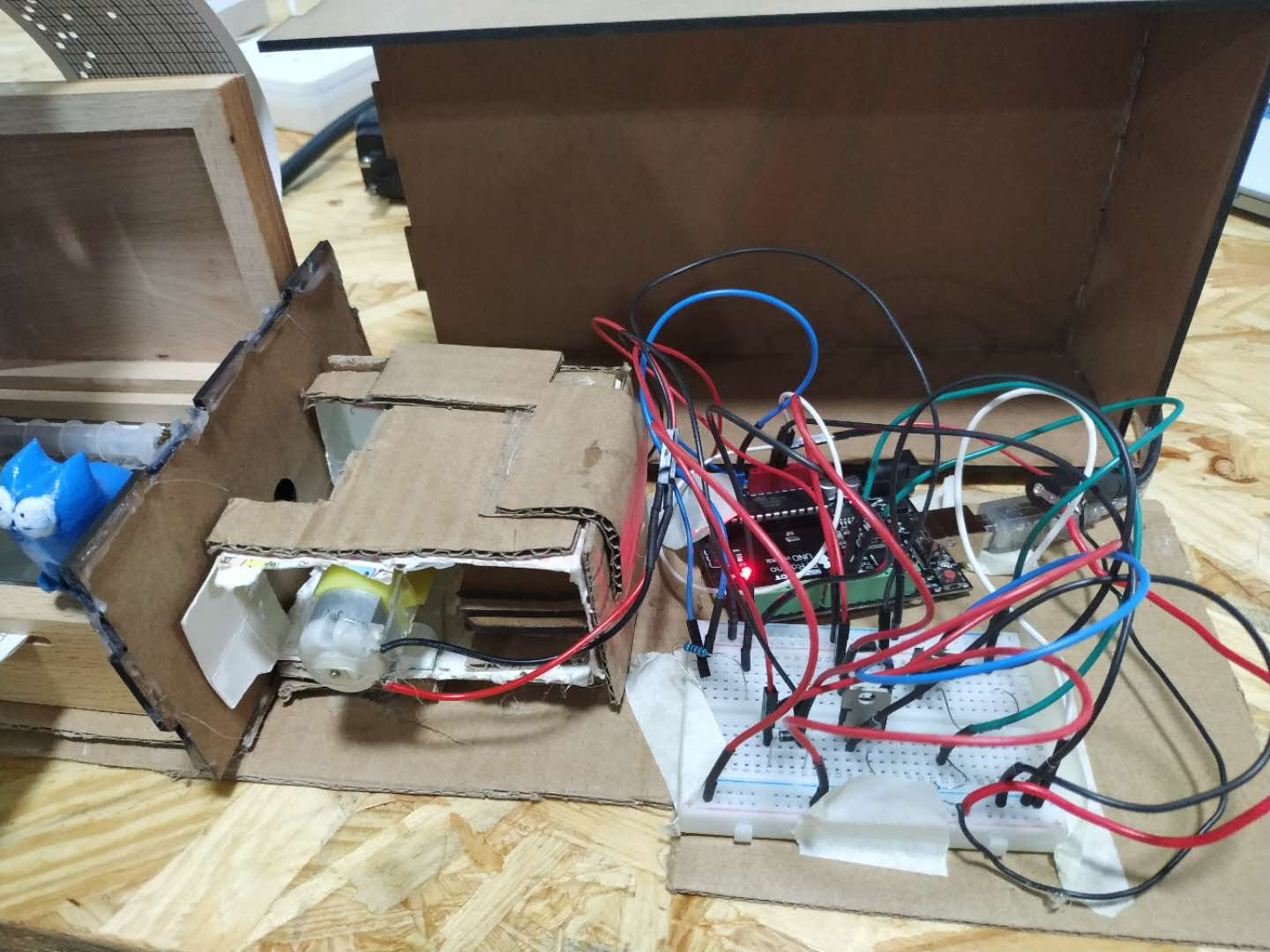
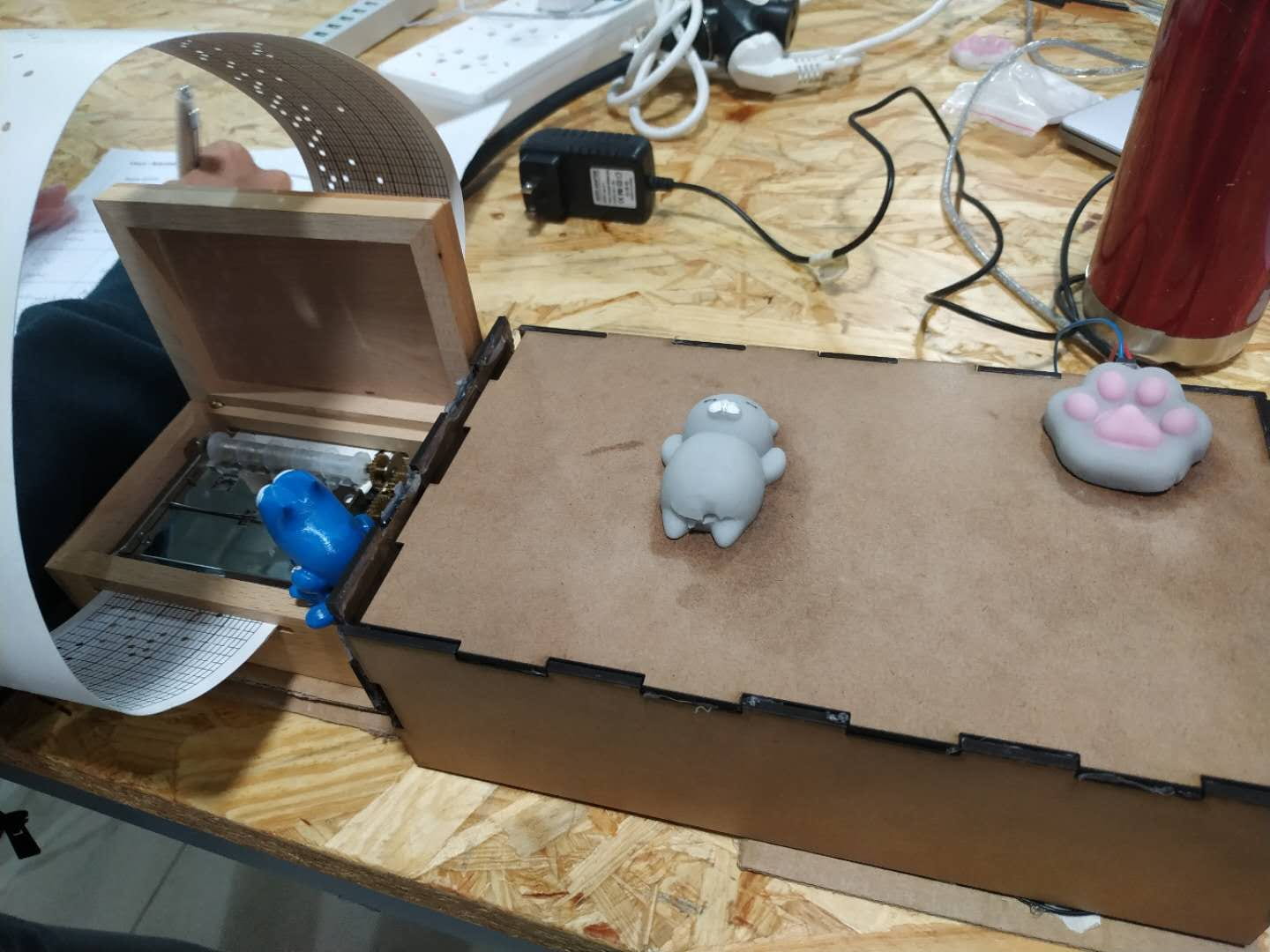
This is our code after revision:
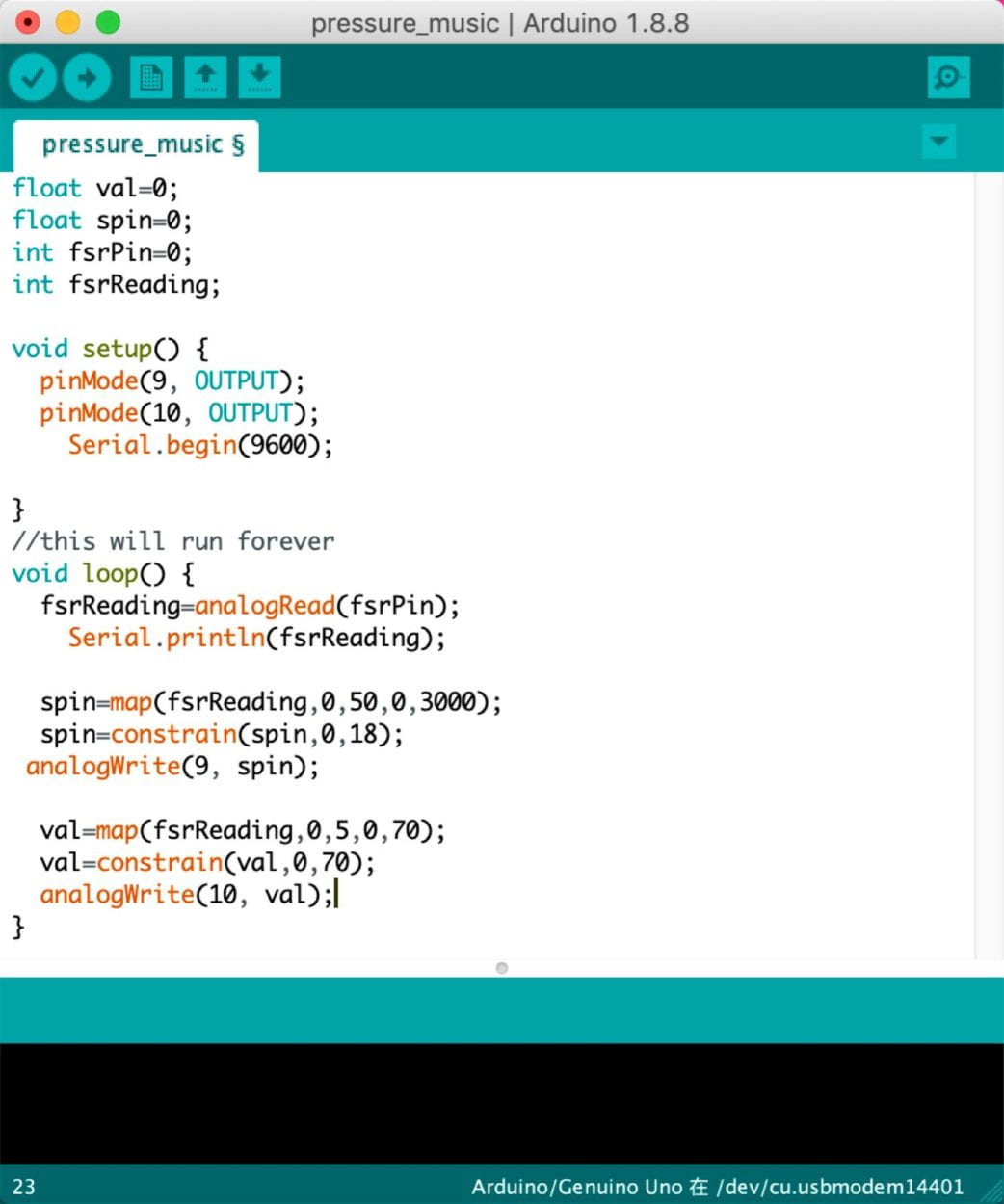
CONCLUSIONS
The goal of our project is to send our good mood for those who love cats and want to be cured and in need of good mood. The audience pressed the paw, appreciated the music and noticed the figurine spinning. However, they didn’t realize they could control the speed of music by their pressure. The interaction level here is not high, which requires merely pressing. Therefore, although it meets my definition of interaction, it is too simple an experience.
Improvements: 1)The motor sound lighter and the music box sound louder. 2)Choices of kittens to rub/pressure. Or, simply change the object designed to be pressed into the whole box. 3)Choices of music played. 4)Better appearance. 5)Higher interaction level.
Takeaways: 1)It’s easier said than done. Don’t stop trying. 2)What seems easy might be difficult when you actually get down to it. 3)Listen to others’ advice! 4)Start early to get a kind-of satisfactory result. 5)Online searching and learning is an essential skill to be cultivated. 6)Never be afraid to try or ask.
This is a project that involves both physical impact(press) and the vocalization of the result(music box giving out music), giving out good mood to anybody who uses it. Why not give it a press and admire some beautiful music?
Video demo:
References:
The project mentioned in the 1st paragraph:
Connected Tools – Devices that mediate smartphone consumption